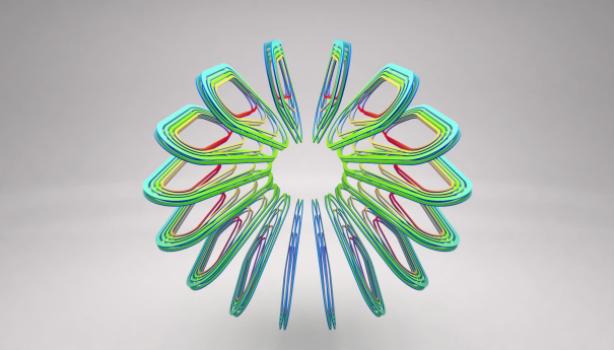The first definitive components of the High-Luminosity LHC, an absorber and a new concept of alignment plate (WePlatE) designed to protect the machine, installed in the LHC. (Image: CERN)
The High-Luminosity upgrade of the LHC (HL-LHC) will extend the discovery potential of the world’s largest accelerator. The upgrade aims to increase its luminosity (rate of collisions) by a factor of five beyond the original design and the integrated luminosity (total collisions created) by a factor of ten. With this upgrade, a major fraction of the LHCb's sub-detectors will be replaced or upgraded during Long Shutdown 2 (LS2).
More demanding data-taking conditions will rely on most recent technological developments of the new detector parts coping with an increase of luminosity from 4x10³²cm¯²s¯¹ to 2x10³³cm¯²s¯¹, implying an increase in the rate of inelastic collisions at the heart of the detector. These collisions will produce a shower of forward particles, namely of neutrals (mostly neutrons and photons) and charged particles (mostly pions and protons), that will leave the interaction point in both directions towards the machine, creating a non-negligible energy deposition in the region. Without the use of an absorber, the recombination dipoles (D2) will see an energy deposition that could bring them above their safety thresholds risking quenching.
The new studies to protect the D2 magnets began with an analysis of the run 3 luminosity conditions by the CERN FLUKA team and of the Target Absorber Neutral B (TANB) requirements, which are shaped by the existing TANA and TANC absorbers situated in Point 1 and Point 5. The Collider Experiment Interface, the vacuum and the installation and integration teams analysed the requirements and found that there was insufficient space between the D2 and the recombination chamber. Thanks to results from the Radiation Protection team and also collaboration between numerous other teams, an optimal solution was found that allowed a major simplification in its design.
The final design of the TANB is a passive absorber made of high-density tungsten produced by powder metallurgy which made it possible to shorten the length to fit in the available space. It clamps to two NEG coated beam pipes and is fully compatible with the high-luminosity vacuum requirements allowing baking at 250° and a heat-up rate of 50°/h.
Another constraint is the proximity to active objects such as the collimators and the recombination dipoles and the exposure to personnel making any routine operation costly. In the case of the TANB this is mainly needed for its alignment. The Collider Experiment Interface team developed a new concept of alignment plate (WePlatE) which allows 6 DOF’s with all adjustment knobs located at the accessible aisle side. The first prototype of the WePlatE was an essential step to demonstrate the validity of the design and of the technological solutions. It was tested by the CERN alignment group in August 2018 at CERN and successfully reached the required precision and repeatability targets.
Four units of the WePlatE have been installed supporting weight in a range from 30 to 600 kg and will reduce the dose to the operators in the future. The newly installed TANB absorbers (1 per side) will minimise the heat load on the D2 magnets to values well below the quench level and prepare Point 8 to the High Luminosity era, possibly also compatible with future LHCb upgrades. It is the first definitive component of the High-Luminosity LHC installed in the machine and a prime example of excellent collaborations across different groups and departments!


